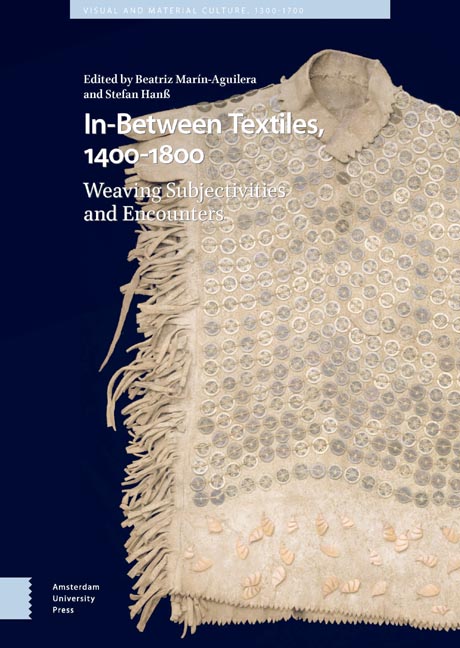Book contents
- Frontmatter
- Dedication
- Miscellaneous Frontmatter
- Table of Contents
- List of Illustrations
- Acknowledgements
- 1 Subjectivities In-Between Early Modern Global Textiles
- Part I Unhomeliness, Mimicry, and Mockery
- Part II The Material Enunciation of Difference
- Part III Identity Effects In-Between the Local and the Global
- Part IV Material Translation and Cultural Appropriation
- Archives, Libraries, and Museums (Abbreviations)
- Select Bibliography
- Index
7 - Dressing in the Deccan: Clothing and Identity at the Courts of Central India, 1550–1700
Published online by Cambridge University Press: 14 October 2023
- Frontmatter
- Dedication
- Miscellaneous Frontmatter
- Table of Contents
- List of Illustrations
- Acknowledgements
- 1 Subjectivities In-Between Early Modern Global Textiles
- Part I Unhomeliness, Mimicry, and Mockery
- Part II The Material Enunciation of Difference
- Part III Identity Effects In-Between the Local and the Global
- Part IV Material Translation and Cultural Appropriation
- Archives, Libraries, and Museums (Abbreviations)
- Select Bibliography
- Index
Summary
Abstract
In the Deccan region of India between the mid-sixteenth and the mid-seventeenth centuries, this chapter argues, textiles from a variety of both foreign and domestic sources were an integral part of social life. Deccani portraits of this period document the astonishing variety of fabrics available to the local elite, and carefully differentiate the costume of the figures depicted, in a manner that reflects the sitters’ range in social status, ethnic background, and political aspirations. This chapter examines the extent to which such novel engagement with clothing mobilised what Bhabha calls the “identity effects” of dressing. In the courtly world of the Deccan, characterised by cultural diversity, textiles could serve the purpose of encoding notions of origin, belonging, and affiliations, as well as a broader repertoire of possible identifications. Dress was thus an intricate part of establishing identity in the Deccani political milieu.
Keywords: Deccan; identity politics; ethnicity; court culture; elites
Introduction
Between the sixteenth and eighteenth centuries, India has been posited as “master dyer to the world,” sending its high-quality textiles to ports around the globe. With analyses of the subcontinent’s role in supplying printed, dyed, and embroidered textiles to many far-flung markets, as well as the networks that enabled this trade, a growing body of scholarship has explored the features that exemplify India’s role in the global textile network of the period. Yet at the same time, textiles from a variety of both foreign and domestic sources were an integral part of social life within India itself. Paintings include, in quite some detail, depictions of garments constructed from cloths made in a variety of weaving and dyeing techniques. Historical chronicles frequently discuss the gifting of textile items, while administrative documents, particularly from the Mughal court, are replete with references to different types of fabrics as well as the locations of their manufacture. All of these demonstrate a keen awareness of the variations in textiles, their materials and grades, as well as the potential of textiles to signify social and political standing.
This is certainly the case for the Deccan region of India between the mid-sixteenth and the mid-seventeenth centuries, at a time when it was a major source for the kalamkari and other textiles that travelled to Europe, Southeast Asia, and the Americas.
- Type
- Chapter
- Information
- In-Between Textiles, 1400-1800Weaving Subjectivities and Encounters, pp. 163 - 184Publisher: Amsterdam University PressPrint publication year: 2023



